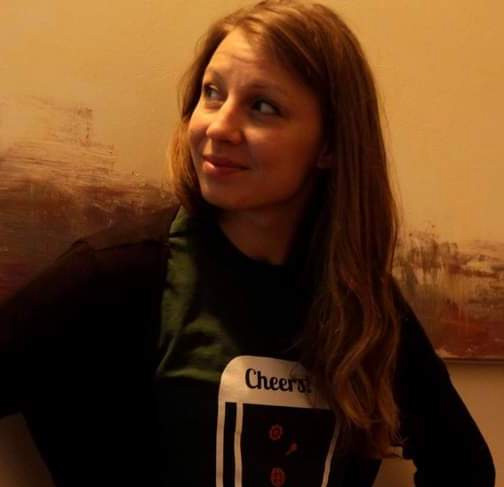 Post Doctoral Researcher
Post Doctoral Researcher
Marine Biotechnology Department
Stazione Zoologica Anton Dohrn
Villa Comunale
80121 Naples - Italy
Tel.: +39 081 5833430
Fax: +39 081 7641355
e-mail: This email address is being protected from spambots. You need JavaScript enabled to view it.
Supervisor: Valerio Funari
Appointed on project: Isolation of extremophile marine microorganisms for bio-recovery and bio-remediation treatments of anthropogenic matrices
Research Interests
Working with marine microorganisms has always been my passion besides being my main field of research. They have a huge potential, mostly unexplored, and represent a new and green source of high valuable compounds with beneficial effects on human and earth health. I strongly believe they could be one of the key players in the development of a sustainable bioeconomy in many sectors. For this to happen, however, it is needed to further implement their exploitation with innovative biotechnologies.
Research in marine environments is offering opportunities for the discovery and utilisation of novel strains for bioremediation of polluted environments and the simultaneous recovery of secondary raw materials from waste sources. With my research, I would like to fulfil these predictions. Indeed, I am currently developing a microbially assisted treatment of End-of-Life car catalysts to enhance economic regeneration, recycling, and recovery of precious metals. It will provide a eco-sustainable solution to improve the related value chain, reducing its environmental impact as waste, and recovering platinum group metals (PGMs).
Selected Publications
Dell’Anno, F.; Vitale, G.A.; Buonocore, C.; Vitale, L.; Palma Esposito, F.; Coppola, D.; Della Sala, G.; Tedesco, P.; de Pascale, D. Novel Insights on Pyoverdine: From Biosynthesis to Biotechnological Application. Int. J. Mol. Sci. 2022, 23, 11507. https://doi.org/10.3390/ijms231911507
Russo M. T.+, Vitale L.+, Entrambasaguas L., Anestis K., Fattorini N., Romano F., Minucci C., De Luca P., Biffali E., Vyverman W., Sanges R., Marina Montresor M. & Ferrante M.I. (2018). MRP3 is a sex determining gene in the diatom Pseudo-nitzschia multistriata. Nature Communications 9:5050. November 2018. DOI: 10.1038/s41467-018-07496-0. ( + These authors have equally contributed to this work)
Ruggiero M.V., D'Alelio D., Ferrante M.I., Santoro M., Vitale L., Procaccini G., Montresor M. (2018). Clonal expansion behind a marine diatom bloom. The ISME Journal vol 12, 463– 472. February 2018. DOI: 10.1038/ismej.2017.181.
Basu S., Patil S., Mapleson D., Russo M.T., Vitale L., Fevola C., Maumus F., Casotti R., Mock T., Caccamo M., Montresor M., Sanges R., Ferrante M.I. (2017). Finding a partner in the ocean: molecular and evolutionary bases of the response to sexual cues in a planktonic diatom. New Phytologist 2017. DOI: 10.1111/nph.14557 (open access).
Vitale L., Patil S., Basu S., Sanges R., Ferrante M.I., Montresor M. (2015). Mating type related genes in Pseudo-nitzschia Multistriata. European Journal of Phycology, Vol. 50, pp. 117- 118. January 2015 https://doi.org/10.1080/09670262.2015.1069489.
Ciniglia, C., Yang, E. C., Pollio, A., Pinto, G., Iovinella, M., Vitale, L., Yoon, H. S. (2014). Cyanidiophyceae in Iceland: the plastid rbcL gene elucidates the origin and dispersal of extremophilic Galdieria sulphuraria and G. maxima (Rhodophyta). Phycologia: 2014, Vol. 53, No. 6, pp. 542-551 https://doi.org/10.2216/14-032.1.No ISI journals
Montresor M., Vitale L., D’ Alelio D., Ferrante M.I. (2016). Sex in marine planktonic diatoms: insights and challenges. Perspectives in Phycology. January 2016. DOI:10.1127/pip/2016/0045.
Book Chapter
Project work Patch-Spore, Barbato P.S., Barra L., De Fenzo A., Fasano C., Iannucci P., Pascale A., Sola M.E., Vitale L. ISBN 978-88-255-xxxx-x DOI 10.4399/97888255xxxxx5 pag. 75–92. 2017. BIOPOLIS idee progettuali per la bioeconomia ed il territorio.










